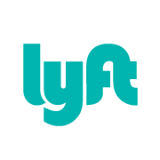Just a couple of recent stories that got me thinking. Item One:
Uber’s business model isn’t all there: While there’s optimism about elements of the core business, the company lost more than $3 billion on operations in 2018, revenue growth slowed between Q3 and Q4, and there’s a possibility that the company might continue to offer big incentive payments to drivers for quite some time and never reach profitability.
But one detail in particular caught my eye. About 24 percent of Uber’s bookings—all the money that customers pay through the app and in cash, including driver earnings—occur in just five cities: New York, Los Angeles, San Francisco, London, and São Paulo.
[…]
This vulnerability casts a new light on, for example, Uber’s 2015 humiliation of New York City Mayor Bill de Blasio, when the company fought off the City Council’s proposed vehicle cap. That was a warning to other politicians, and a show of power, but it was also a vital business move. The company’s filing also mentions, as a cautionary tale, what happened afterward: Just three years later, the City Council approved minimum rates for drivers and a cap on the number of new ride-hail vehicles. The company also mentions its regulatory challenges in London and San Francisco.
During Uber’s previous skirmishes with cities, I always thought the company’s huge reach and light footprint (very few local employees or inventory) gave them a lot of leverage. They could afford to play hardball with Austin, Texas, one week and San Antonio the next, with little impact on a business distributed so widely.
The filing reveals that certain cities actually have a pretty strong negotiating position. So do the company’s drivers in those places. And its rivals. What appears to be a global, decentralized platform is in fact highly dependent on the whims of a few local politicians, drivers’ groups, and taxi cab unions that can engineer big chokepoints for the company—as London Mayor Sadiq Khan must have done when he revoked the company’s license in 2017. (They got it back last year.)
Another example of the company’s vulnerability by concentration: 15 percent of the bookings pot comes from trips that begin or end at an airport. That might not be so surprising, since airports tend to be cab trips even for car commuters, and being a long way from town, produce high fares. But airports offer a preview of the changing municipal economics that could be coming for Uber. The airport in Charlotte, North Carolina, for example, made more money in 2017 from parking fees than it did from American Airlines. Parking accounted for more than a quarter of the airport’s revenue. As passengers shift to ride-hailing, airport revenues are declining. Airports are an easy place where public authorities can implement a fee on Uber rides to make up for the lost revenue.
That same dynamic is set to play out in cities as well. Congestion pricing, which will soon exist in two of Uber’s biggest markets (New York and London), is just the first way that governments are exerting more fine-grained control over how cities raise money from automobile use.
So Uber continues to burn through money with no end in sight, and is particularly vulnerable to the regulatory whims of a handful of large cities. Hold that thought as we look at Item Two:
Lyft’s initial public offering headache just got worse.
Bloomberg reported Wednesday that following Lyft’s initial public offering, which didn’t exactly go super well, the company is now looking at two separate lawsuits from its investors. At the time the company went public last month, Lyft’s shares were initially priced at $72. But shortly after, its share price began to fall—and kept falling—with the company at $58.36 as of Thursday.
According to Bloomberg, investors allege in their suits—both of which were filed in state court in San Francisco—that Lyft’s claim to 39 percent market share was maybe not quite in line with reality.
The suits also reportedly faulted the company for failing to alert investors ahead of its recent electric bike recall, yet another problem facing the company at present (aside, of course, from ongoing controversy over Lyft’s labor practices).
Lyft, which also loses money hand over fist, had a disappointing IPO and is dealing with shareholder lawsuits and problems with their bike-related subsidiaries. They would also face the same potential regulatory challenges as Uber.
My thought in reading these stories is that the future of urban transportation is increasingly being sold as ridesharing powered by autonomous vehicles. We should be wary about investing in big transit projects because 10 or 20 years from now we’re all going to be taking robot-powered Ubers. But what if Uber and Lyft fail as companies before we get there? What if a combination of technology challenges, cash flow problems, regulatory roadblocks, and competition from other interests stop them in their tracks? Maybe light rail will be seen as as white elephant in twenty or thirty years, but right now our existing light rail lines move tens of thousands of people around every day; in a different political climate, that number would be much higher.
If Uber and Lyft do fail, it is very likely that some other companies will spring up to fill in the gap. Driverless car technology is moving forward relentlessly, regardless of what its ultimate applications may be. Autonomous vehicles are going to be in the transit mix going forward, in some form and with some corporations behind it. I just remain wary of the bold predictions, and I remain convinced that we need to continue investing in things that we already know will work.


